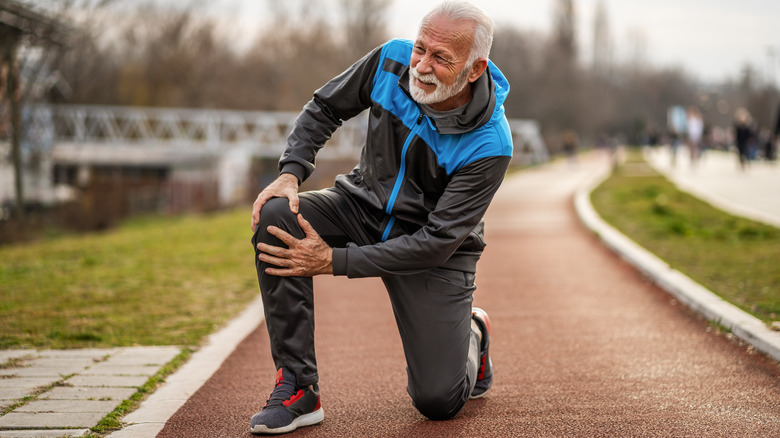Why You Should Never Push Through Pain During A Workout
You've probably heard the phrase "no pain, no gain" when it comes to exercise, and you might take this as an encouragement to push past any pain you feel during a workout. While you exercise, it's common to experience mild soreness or a slight burning sensation in the working muscles due to an acute build-up of lactic acid at that moment. You can expect that sensation to disappear as soon as you stop the activity (per Cleveland Clinic).
If your workout is particularly tough, don't be surprised to experience delayed-onset muscle soreness (DOMS) anywhere from 12 to 24 hours after your workout. According to the American College of Sports Medicine, with DOMS your muscles will feel tender to the touch, sore, and stiff, and the soreness typically peaks from one to three days following exercise. What's happening is that high-intensity exercise can cause microscopic tears in your muscle fibers. Your body's response to this damage is to increase inflammation, which in turn leads to muscle soreness that slowly develops, peaks, and declines over several days (via Healthline).
Muscle burn and DOMS are your body's natural responses to exercise, and they go away on their own within minutes or a few days. Sharp and persistent pain, however, could be a sign of injury.
Listen to your body
Strong, sharp, or persistent pain that develops while you are exercising should not be ignored (via Cleveland Clinic). "A certain low level of soreness is acceptable, but you should not push through pain while exercising," sports medicine physician Dominic King told Cleveland Clinic.
According to experts at Self, you should never brush off any pain that is sharp, localized, or accompanied by swelling. That's because these symptoms could be signaling a serious injury, including a torn meniscus, bone fracture, or loose bone fragments. If your pain gradually gets worse the longer or harder you work out, you should stop what you're doing. If you keep pushing through the pain, "you are likely causing further injury to that specific tissue or joint, and the exercise should be stopped," physical therapist Natalie Neuharth told Self.
That's why it's important to listen to your body and pay close attention to any pain you feel during a workout. If you experience any of these symptoms, you should stop exercising immediately. Rest, icing the area, and taking anti-inflammatory medication can help alleviate your pain. If your pain doesn't improve in a week or two, you should see a doctor or physical therapist (per Self).


